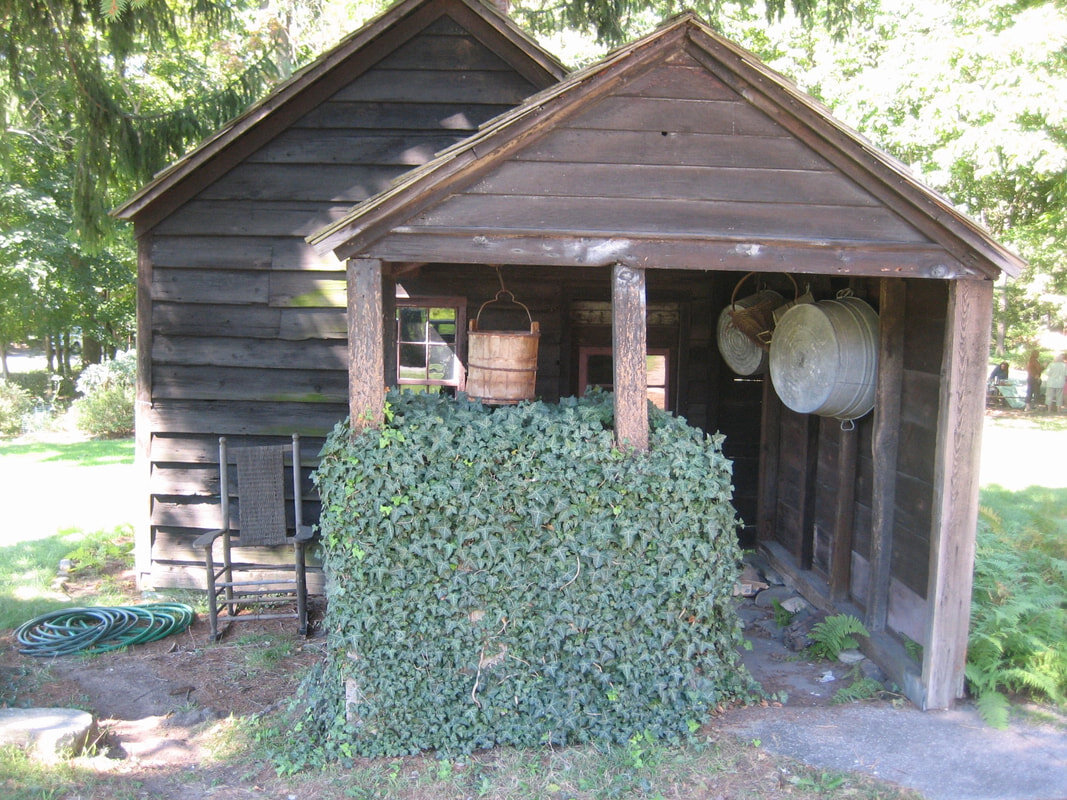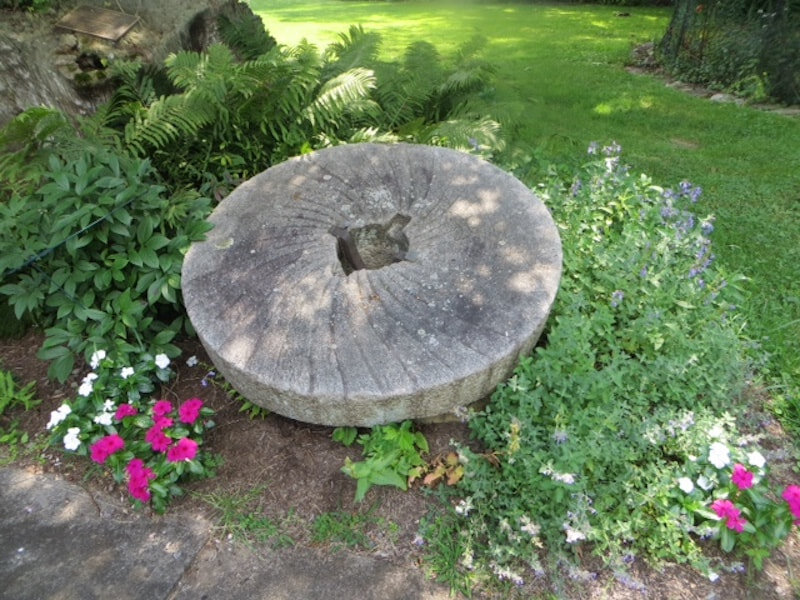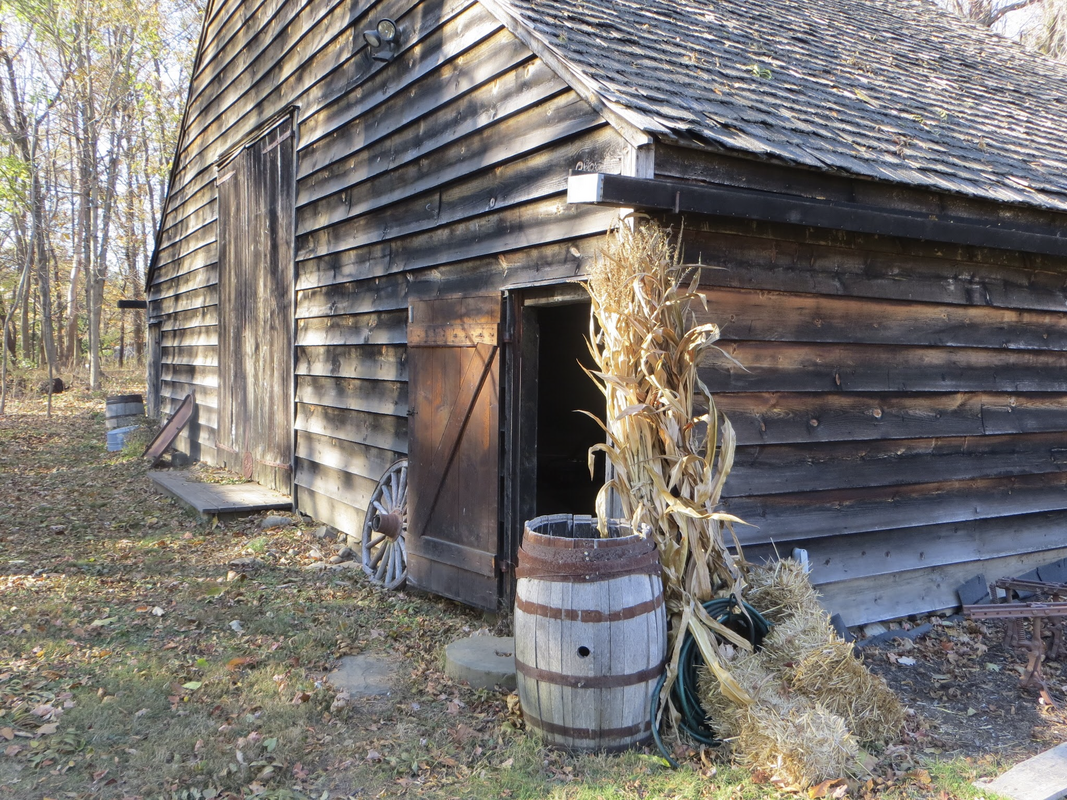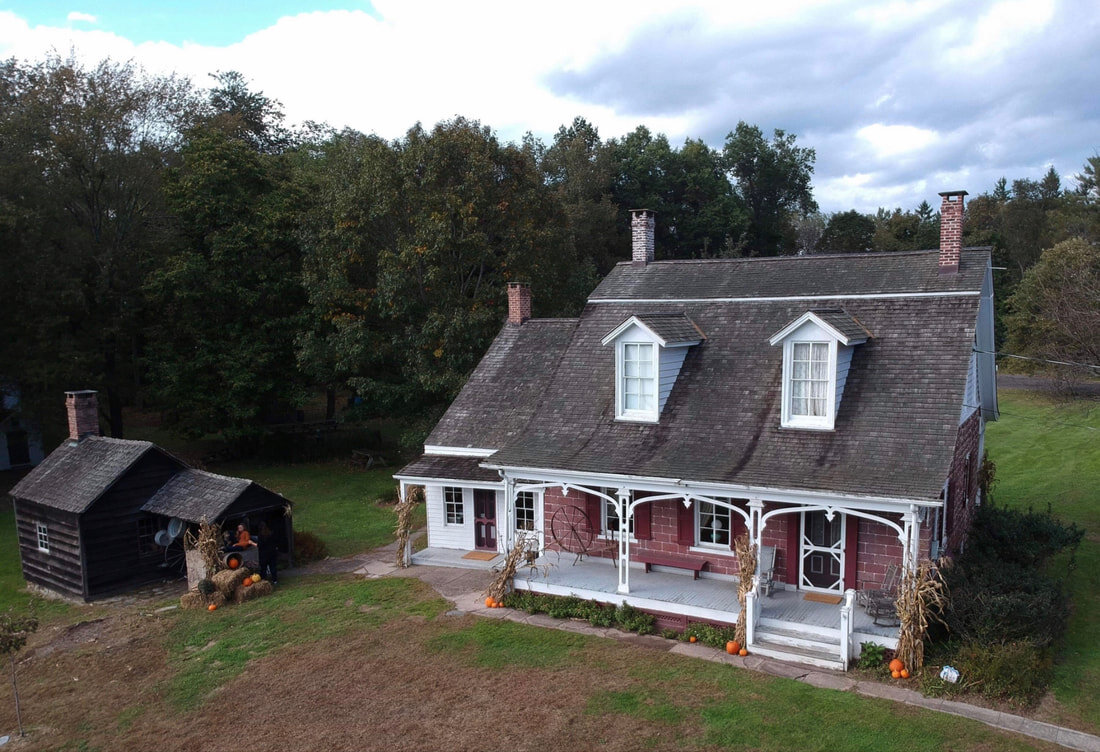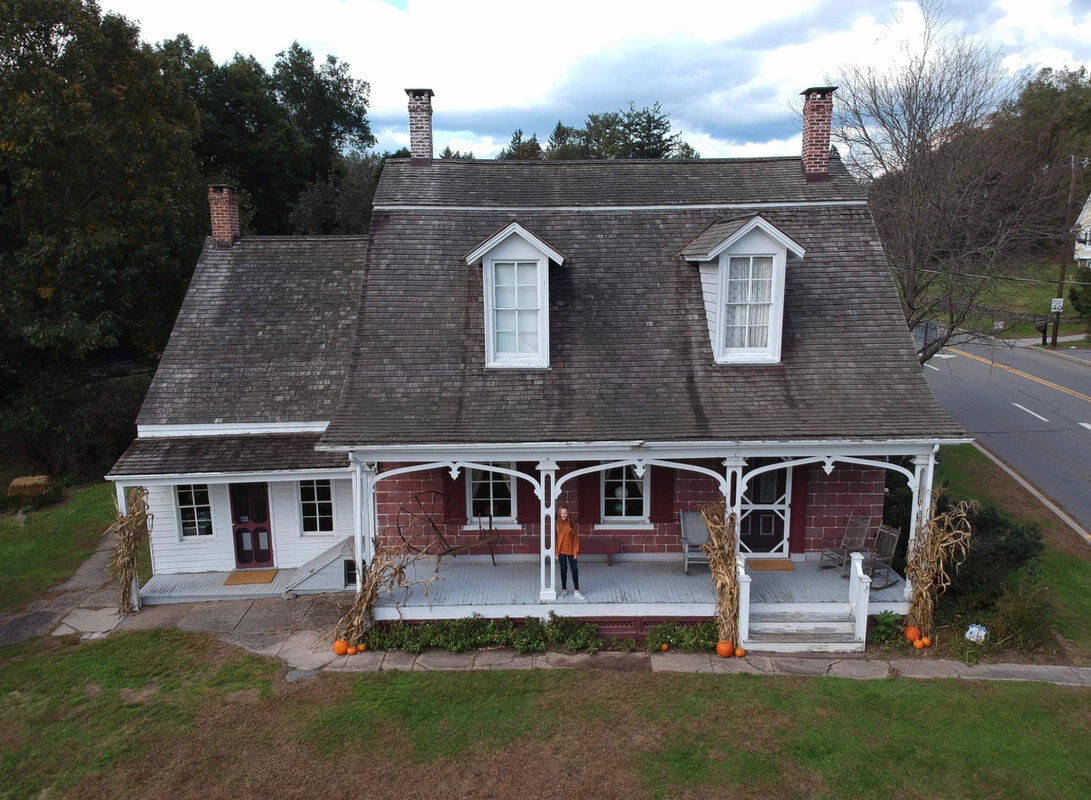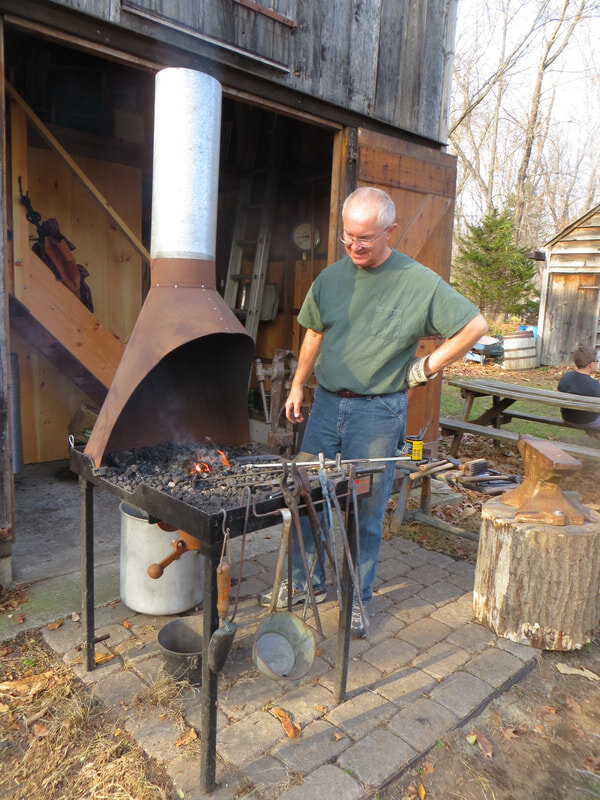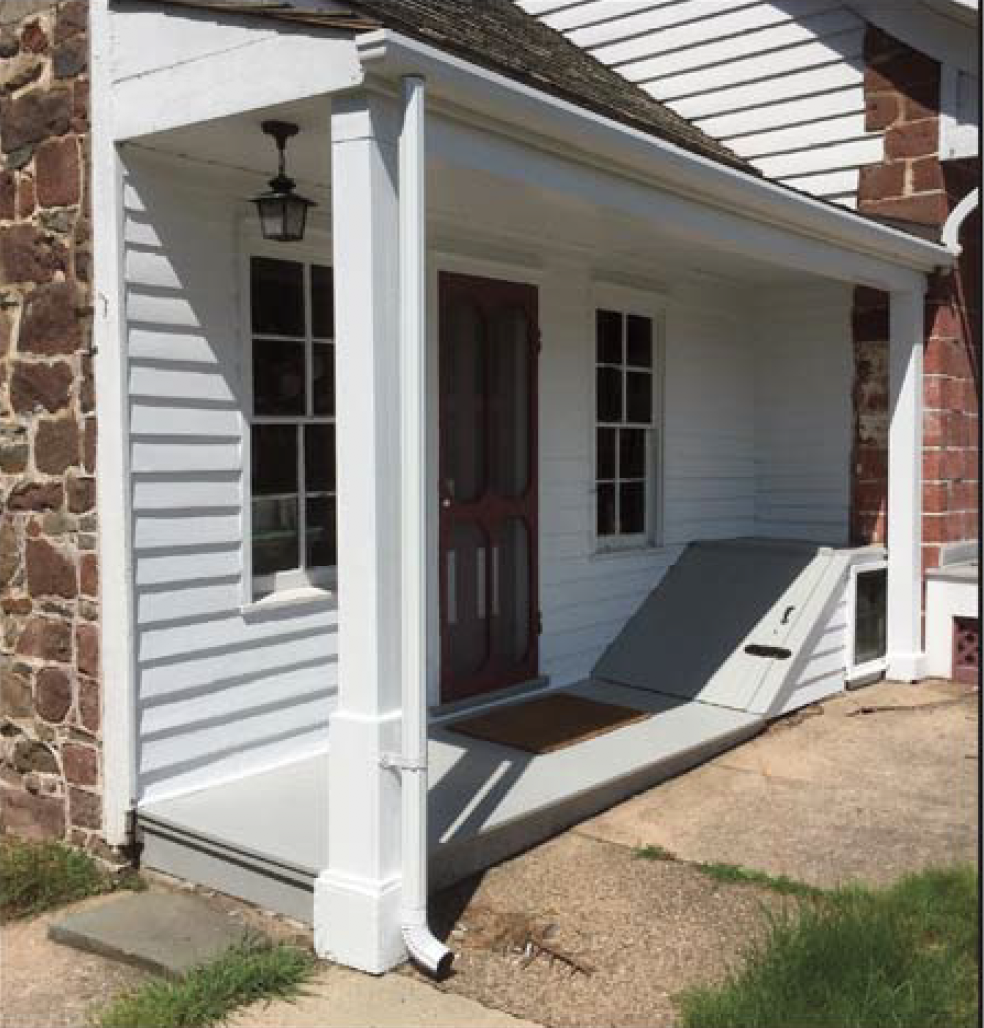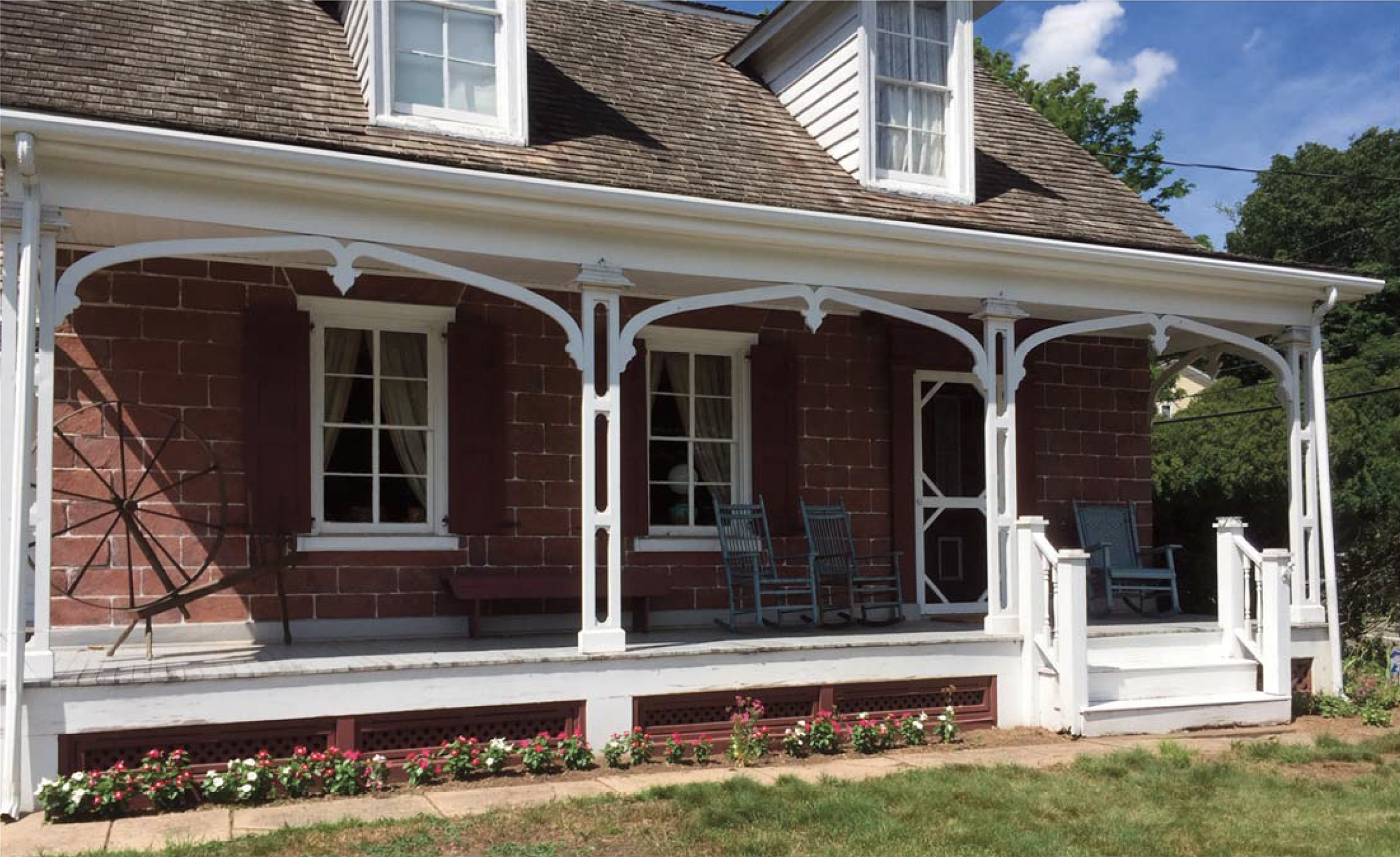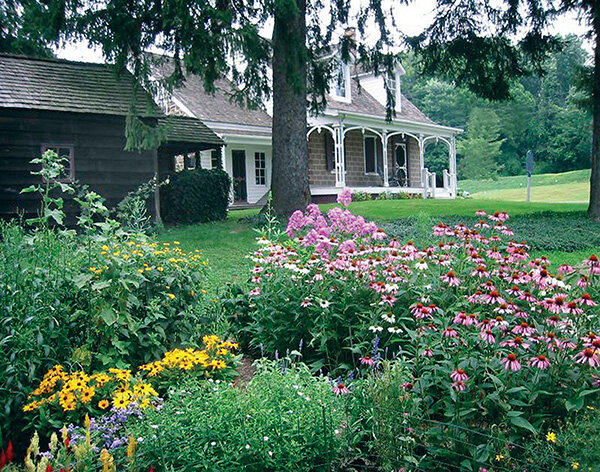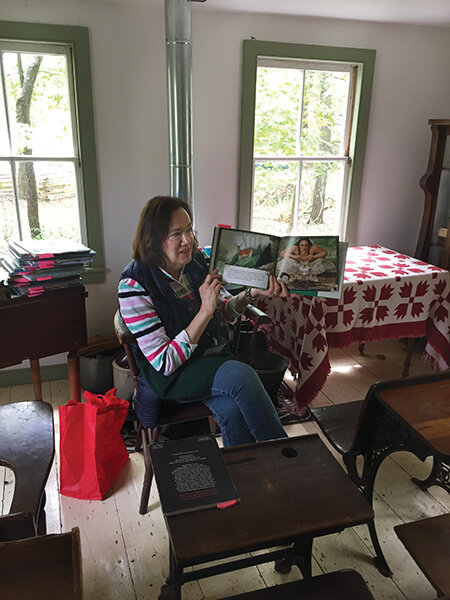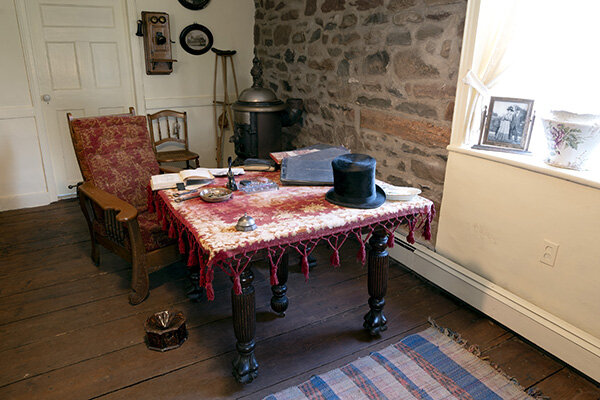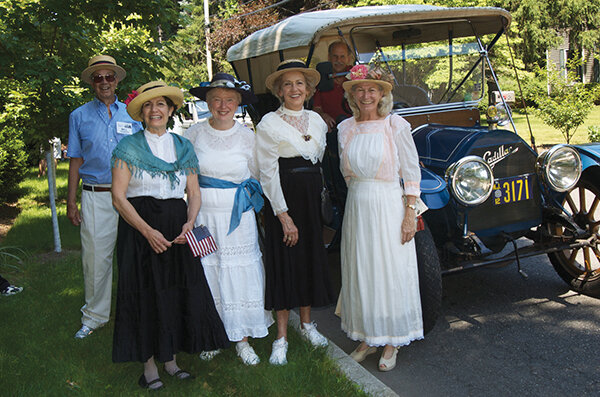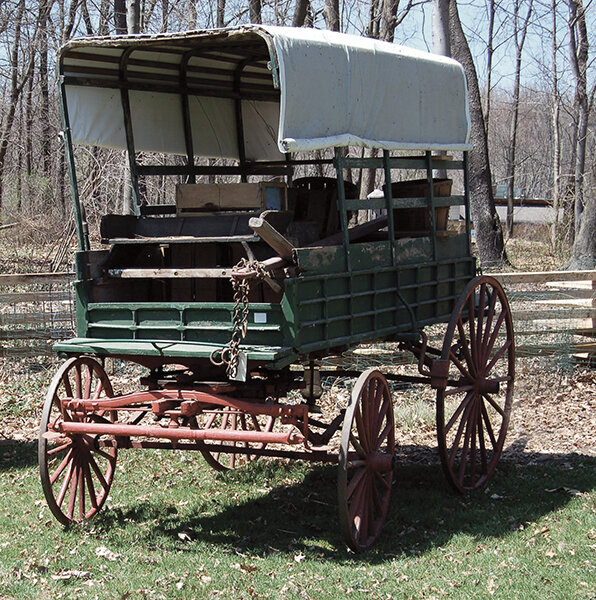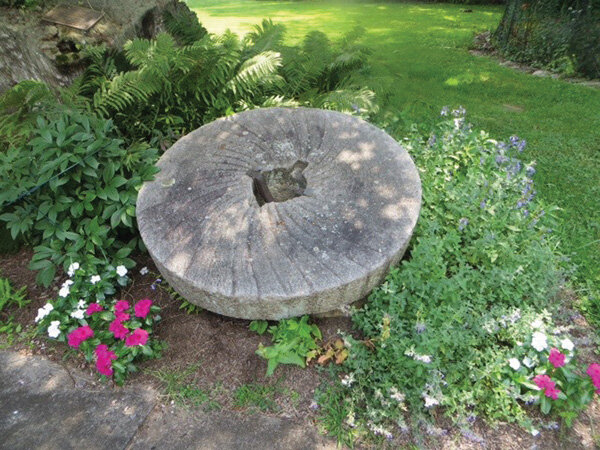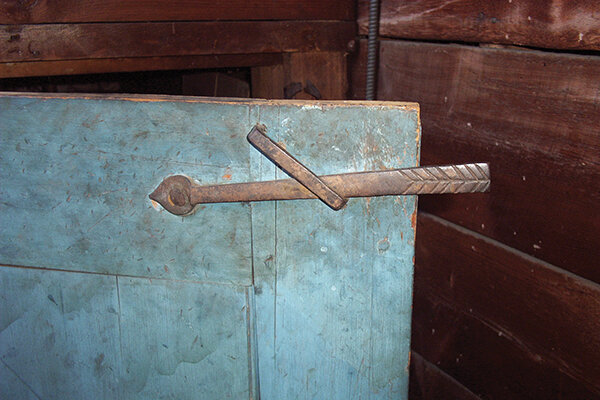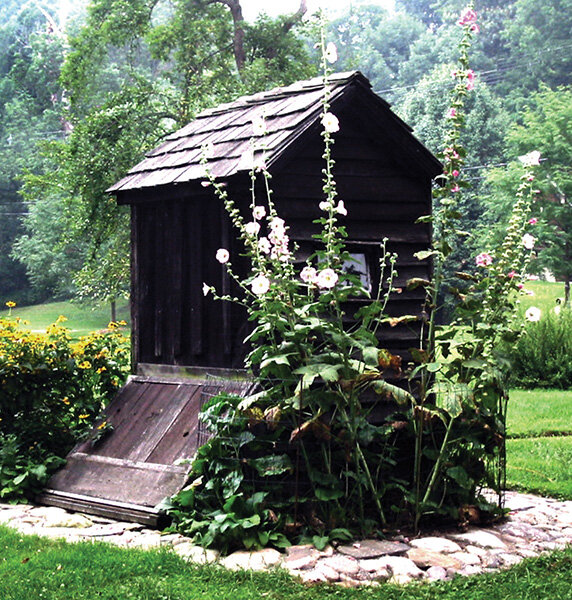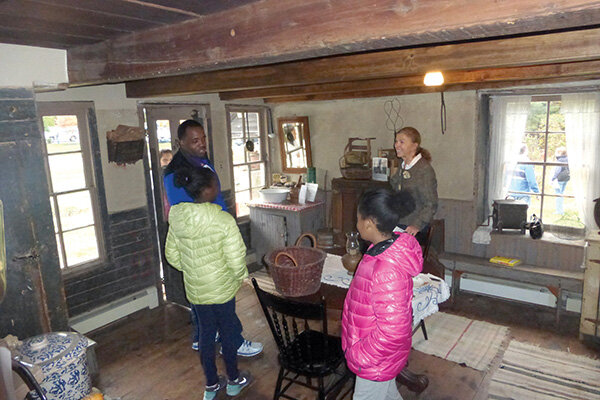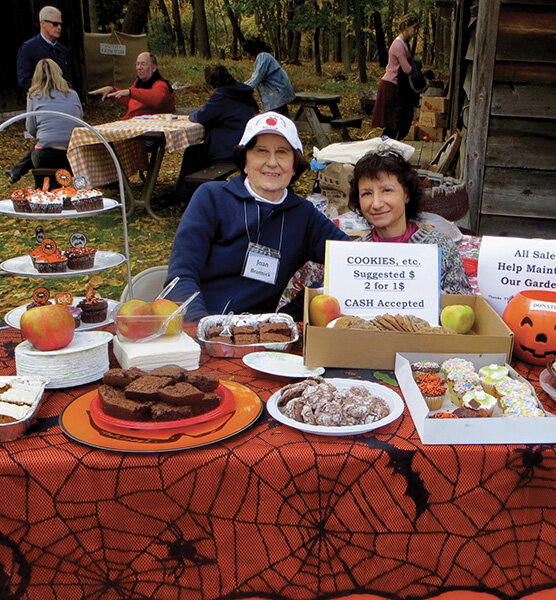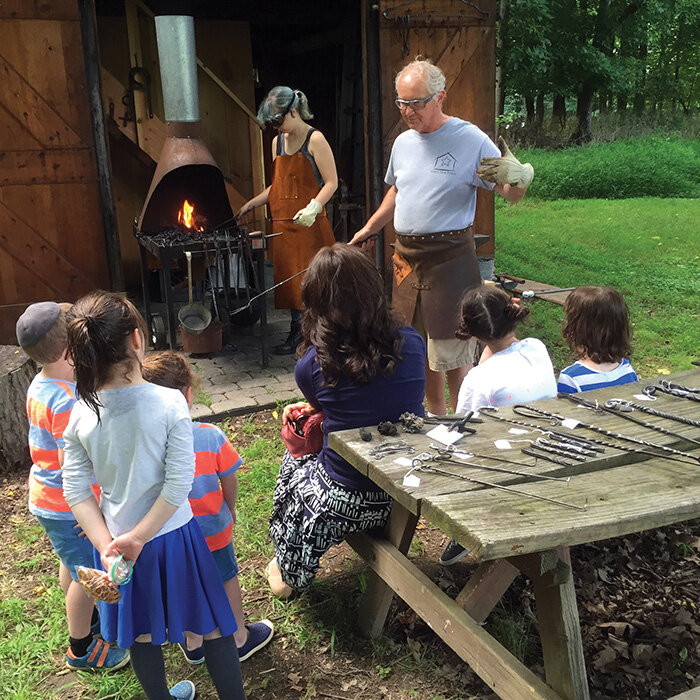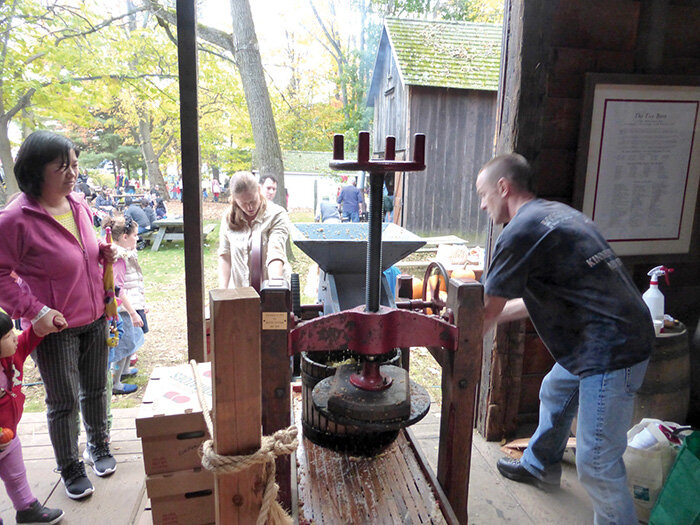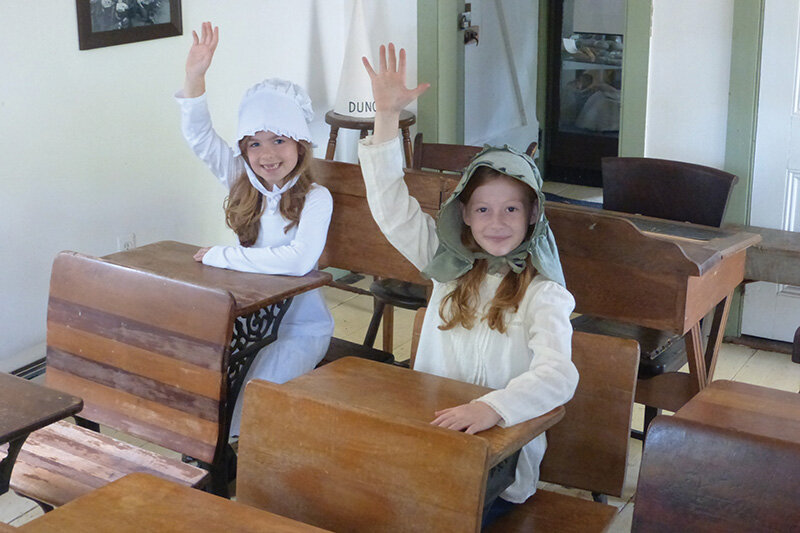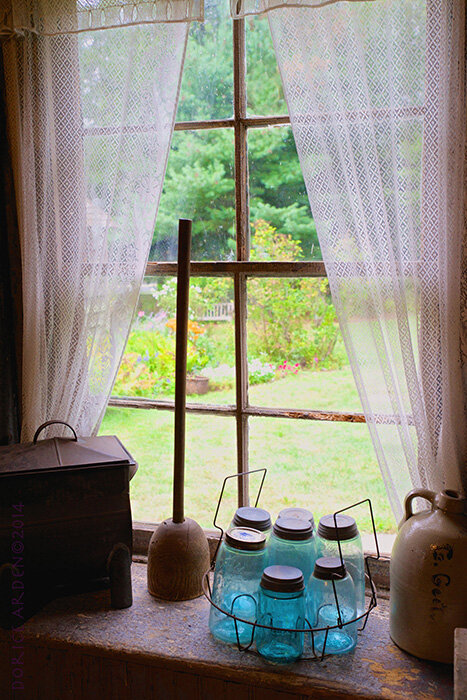History of the historical society
Bicentennial Beginnings
Like many towns in 1977, Upper Saddle River was filled with an enthusiasm and a reverence for history following the 1976 Bicentennial celebrations. Every organization in town had participated in some way, with the highlight being a townwide picnic at Lions Park. The formation of The Upper Saddle River Historical Society was a natural offshoot of all that enthusiasm. Kay and Bill Yeomans, Fred Hampton, and Joan Fabris organized a group of interested people. Hanes Heller drafted the Bylaws, a slate of officers and trustees was established, and an invitation to join was sent out to all residents.
One hundred memberships came in almost immediately and within a few years it reached 500. Three programs were held the first year at the Library, one by George Geils on Indian artifacts, one by Ruth Brandrup on colonial furniture and tools, and one by Fred Hampton on old-fashioned Christmas ornaments. The display case featuring the Indian artifacts donated by Cornelius Berdan was dedicated. And we continued to collect oral history tapes of long time residents.
A Mission to Collect and Preserve
Our old newsletters give an overview of Historical Society accomplishments. In 1978 we received a grant from the New Jersey State Historical Society for $500 for a traveling Indian Artifacts Program. Russ Volmer photographed the artifacts for a sound-on-slide program narrated by John Kroner. The grant was used to purchase a traveling display case that would accompany the slide show.
Favorite programs were those given by Ruth Brandrup on antiques and appraisals and by Fred Hampton on one of his collections or a “What’s It?” evening where people brought in unidentified objects.
Those early years were spent collecting. We copied photographs and documents, and researched our old homes and the genealogies of early settlers. Dorothy Ware and Jane Hampton spearheaded a project to photograph native wild flowers that were fast disappearing. Several programs featured panel discussions with long-time residents on the early days in Upper Saddle River. They were taped and have become a priceless part of our oral history collection. Slide programs were put together and presented on many topics: Upper Saddle River history, our old homes, farming, the fire department, Anona Park, our churches and the one-room school. Photos of past mayors were collected to be enlarged and framed for the Borough Hall as an Eagle Scout Project.
In 1981 Curts Cooke from Bergen Highlands United Methodist Church asked if we could find a use for the “Little White Church on the Hill.” It had been empty since they moved to their new church across the street and they wanted to see it preserved. Our dream since inception had been to see the Hopper-Goetschius House become a museum, but we very much wanted to see the church preserved. The Historical Society joined with the Junior Women’s Club and the Woman’s Club to start the Saddle River Valley Cultural Center. A board was formed and Louise Pocock volunteered to be the first director. Art classes and music programs were offered. The Lions Club donated a movie projector to show old time movies. And it has been a perfect venue for our program meetings. The Cultural Center got off to a firm start and has evolved into a very successful children’s art center.
Realizing a Dream
Then, in 1985, our dream came true. Clint Carlough and his wife Grace donated the Hopper-Goetschius house to the Borough of Upper Saddle River to be used as a museum run by the Historical Society. Clint’s aunt, Lizzie Carlough Goetschius, had passed away in October 1983, just a month before her ninety-sixth birthday. Clint recognized the importance of her home.
The Upper Saddle River Historical Society willingly agreed to undertake turning the Hopper-Goetschius House into a museum. At the time the funds in our treasury amounted to a little over $10,000. Once again the community joined in the project. Residents became charter members. Fundraisers were held. Our local clubs helped in the cleanup and restoration. What has been accomplished since then is a tribute to the energy and creativity of many volunteers.
Pictured here are Fred Hampton, Merle Wulster, USR Mayor, Claire Tholl, Kay Yeomans, Bob Terry and Grace and Clinton Carlough at the dedication of the historic plaque outside the Hopper-Goetschius House Museum.
The Garden Committee was formed early on and its dedicated volunteers continue to keep the Museum property looking beautiful and bringing back Lizzie Goetschius’ original plantings. Seen here are original members of the Garden Committee in 1989.
Barn dedication - 1990
After painstakingly dismantling and moving the Van Riper-Tice Barn to the Hopper-Goetschiuse House Museum, an official dedication took place with Joe Sheffel, who provided lumber, Mayor Frank Grout, Bill Yeomans, Clinton and Grace Carlough.
Historic Preservation Commission
Upper Saddle River’s Historic Preservation Commission (HPC) was established to protect buildings listed on the Borough Inventory of Historic Sites from demolition or major alteration that would destroy historic value, to encourage owners of those buildings to explore alternatives to demolition and to foster pride in the community and its historic past. Upper Saddle River is rich with history and its historical buildings and sites add greatly to the town’s charm.
The HPC is making available historic markers for eligible historic homes. Homes must be listed on the Upper Saddle River Inventory of Historic Homes and/or the Bergen County Survey of Historic Sites. Almost all of these homes were built before 1900. Members of the Commission will be contacting the homeowners of eligible homes and explaining the program to them.
The USR HPC was formed by the Mayor and Council in 2008 and has already listed all of the historic homes and sites in town. Eighteen homes and sites have registered with the HPC and have been awarded commemorative plaques.
The Upper Saddle River Historic Preservation Commission (USR HPC) was chosen to receive the 2010 Historic Preservation Commendation Award from the Bergen County Historic Preservation Advisory Board. The HPC was cited in the Preservation Leadership Category.
For more information, visit www.usrtoday.org/historic-preservation-commission/
Shirley and Alan Newman beside their historic plaque on their 1880 Queen Anne Victorian.
PURPOSE
To collect, preserve and disseminate the history of the Upper Saddle River area. To administer the Hopper-Goetschius House Museum, outbuildings, and grounds.
Collections include taped interviews, printed matter, digital records, memorabilia, furnishings, cooking items, farm tools and equipment, vehicles and other materials related to local history.
Preservation includes maintaining all buildings, furnishings, tools and equipment in, as nearly as possible, their original condition, cataloging and filing all tapes, photographs, printed and other media so they can be readily retrieved, and maintaining inventories of all items in the archives and house and farm collections.
Dissemination includes publishing a newsletter periodically throughout the year, hosting a website, holding tours and demonstrations at the museum, holding classes related to historical arts and crafts, running program meetings at which topics of historical significance are presented and discussed, and presenting other events and activities that enhance people's awareness of the heritage of the area.
Administering the museum includes maintaining and presenting furnishings and displays in the house, barn and other out-buildings to enable visitors to get a sense of history, and learn about life in years gone by.






